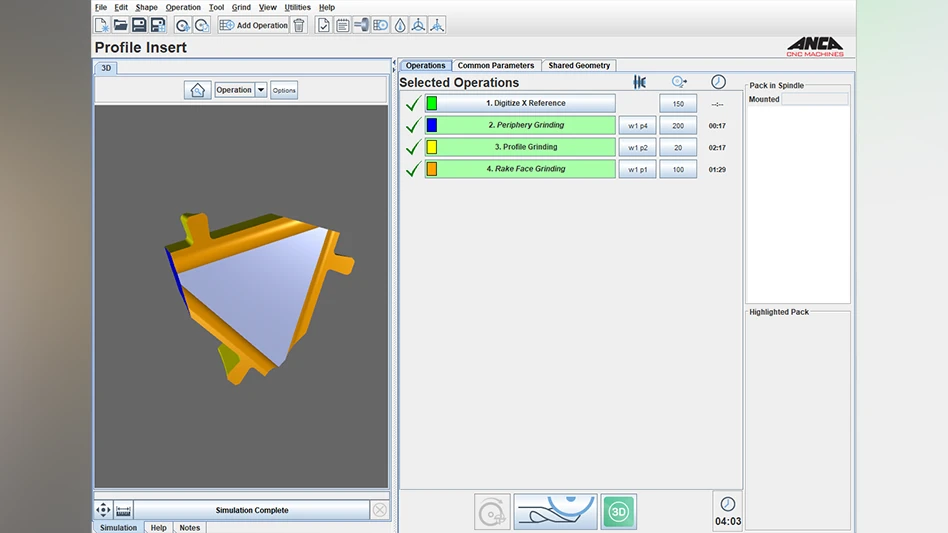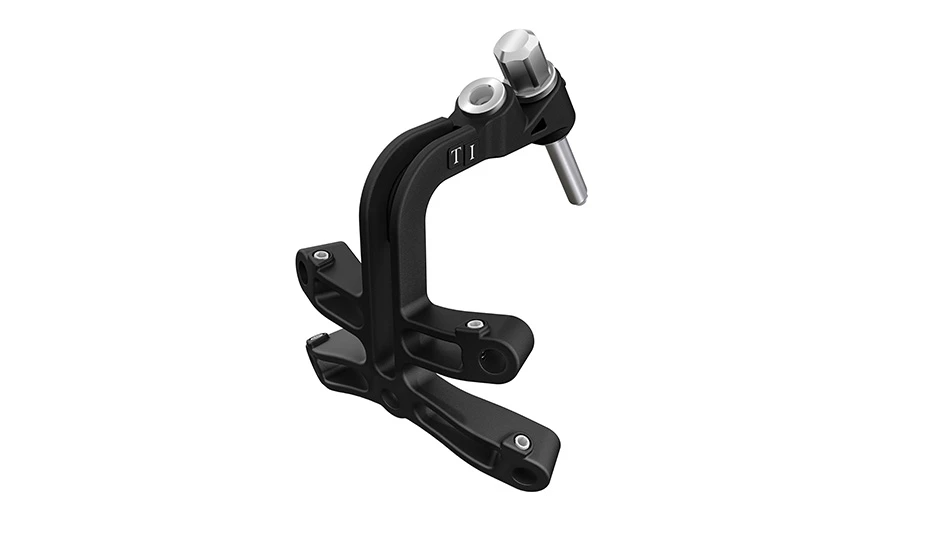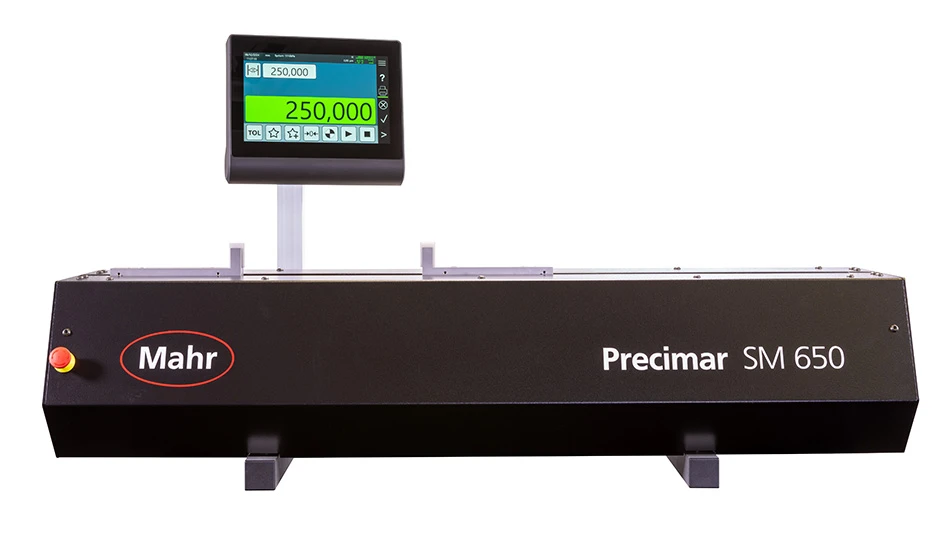Editor's Note: This article originally appeared in the May 2025 print edition of Today's Medical Developments under the headline “Right manufacturing methods for the materials.”

Manufacturing surgical tools and medical parts relies on advanced technology to improve healthcare. These specialized tools are essential for accurate procedures and better quality of care results. Producing high-quality medical equipment requires selecting the right materials and using precise manufacturing methods to ensure safety, durability, and reliability.
Material selection
Material selection is an important step in manufacturing surgical tools, as different metals and alloys offer unique properties suited for specific medical applications. Some medical parts and surgical tools, such as crutches and prosthetic devices, provide support to the body. Mechanical components, such as levers and gears, involve movement and work in coordination with other body parts.
Making complex parts involves shaping materials into detailed designs, such as blades, probes, and pointed tools, often using welding to securely join components. Additionally, medical part requirements for manufacturers depend on the specific function of the device or tool. They must meet high standards for safety, durability, biocompatibility, precision, and hermetic sealing to ensure reliability in medical applications.
Stainless steel is commonly used as its corrosion resistance, strength, and biocompatibility make it ideal for scalpels, forceps, and surgical scissors. The most used types in medical applications are 316L stainless steel (low-carbon austenitic stainless steel) and 17-4 PH stainless steel (Precipitation Hardening martensitic stainless steel). 316L stainless steel, also known as surgical-grade stainless steel, is preferred for its excellent resistance to corrosion, especially in body fluids, making it suitable for implants and surgical tools. 17-4 PH stainless steel offers high strength and hardness, making it ideal for precision instruments and components that require durability.
Titanium is another popular choice as it’s known for its lightweight nature, high strength-to-weight ratio, corrosion resistance, and excellent compatibility with the human body, making it ideal for implants and surgical instruments.
Platinum is often used for specialized medical applications, such as pacemakers and catheters, due to its superior conductivity and resistance to bodily fluids.
Nitinol, a shape-memory alloy made of nickel and titanium (NiTi), is widely used in medical devices such as stents, guidewires, and orthopedic implants due to its flexibility, super elasticity, and ability to return to its original shape after deformation (shape-memory).
Welding medical tool devices: Regulation and material challenges
Medical welding tools must meet strict standards for compliance, safety, precision, biocompatibility, hermetic seal, and durability. Key requirements include:
- ISO 13485: Quality management system for medical device manufacturing.
- FDA Regulations (21 CFR Part 820): Ensures compliance with Good Manufacturing Practices (GMP).
- ISO 10993: Biocompatibility testing for medical devices.
- ASTM F2063 & F136: Standards for materials like nitinol and titanium used in medical devices.
Meeting these requirements comes with unique challenges for each medical material. For example, welding 316L stainless steel has a high thermal expansion rate, which can lead to hot cracking, micro-cracks, and porosity in the weld. Similarly, 17-4 PH stainless steel can develop cracks from high heat, especially in the Heat Affected Zone (HAZ), due to the formation of brittle structures. If welding isn’t properly performed, these cracks can weaken the structure. Additionally, 17-4 PH stainless steel is sensitive to oxygen, nitrogen, and hydrogen contamination, which can result in weld defects.
Welding titanium presents challenges due to its low thermal conductivity and high melting point, making heat input difficult to manage. Improper heat control can lead to excessive distortion, warping, or grain growth, ultimately reducing weld strength. Additionally, titanium can change at a microscopic level during welding, creating brittle structures in the welded area and HAZ, making it weaker and less flexible. Finally, titanium reacts with oxygen, forming a brittle oxide layer, requiring a controlled gas shield to prevent defects.
Platinum has a very high melting point (1,768°C or 3,214°F), requiring a high-energy laser to achieve effective melting and fusion. However, excessive heat input can cause grain growth, distortion, and residual stresses, weakening the weld joint. Additionally, platinum has high reflectivity to certain laser wavelengths, particularly fiber lasers, which have wavelengths between 1,060nm and 1,075nm, reducing energy absorption and potentially leading to inconsistent welds.
Nitinol’s key advantage is super elasticity, and the shape memory effect is derived from its phase transformation behavior between austenite and martensite. But excessive heat input during welding can alter its transformation temperature, leading to a loss of these properties and reduced functional performance. Additionally, Nitinol contains a high percentage of titanium, making it highly reactive to oxygen, nitrogen, and hydrogen at elevated temperatures, which can result in oxide formation, embrittlement, and decreased corrosion resistance. Furthermore, Nitinol absorbs gas during welding, causing porosity that weakens the weld.
Welding medical tool devices: Laser technology solutions
Laser welding is widely used in the medical industry for its precision, minimal HAZ, and strong, defect-free welds. However, welding medical materials requires precise heat control. Quasi-continuous wave (QCW) fiber lasers operate in a high-frequency pulsed mode, delivering bursts of energy mimicking continuous wave (CW) output but with higher peak power and minimum pulse duration in the millisecond level.
Laser welding heads guide the beam through fixed optics but have limitations in medical welding. A 2-axis scan head enhances precision by dynamically controlling the beam in the X-Y direction using movable mirrors. These scanner heads, integrated with advanced control systems and software, ensure fast, accurate laser movement for optimal results.
Advanced techniques such as microsecond-pulse laser welding with beam oscillation improve heat control, reduce spatter, eliminate pores, and enhance gap sensitivity while minimizing heat damage.
Photon Automation Inc. developed WonderBoard, a pulse and power profile controller that manages lasers at the microsecond level, enabling custom pulse shapes. By precisely shaping pulses, it optimizes energy delivery, reduces thermal stress, minimizes spatter, and improves weld penetration. This increases peak power from kilowatts to megawatts while maintaining average power, enhancing welding for high-melting-point and reflective materials such as platinum. Additionally, WonderBoard controls galvanometer mirrors, improving efficiency, precision, and adaptability, making it a preferred choice for modern medical manufacturing applications.
Each material requires specific parameters to overcome its challenges.
316L stainless steel requires microsecond pulsed laser welding to control heat input and prevent hot cracking, micro-cracks, and porosity. Pre-weld cleaning removes contaminants, while argon or nitrogen shielding gas prevents oxidation and strengthens the weld. Beam oscillation further improves quality by evenly distributing heat.
7-4 PH stainless steel is best with pulsed laser welding with spatial pulse shaping minimizing cracking and brittle phase formation in the HAZ. Beam oscillation further improves weld integrity by reducing stress concentrations and refining microstructure. Post-weld heat treatment, such as solution annealing and aging, enhances ductility and relieves residual stress. Argon shielding gas prevents contamination from oxygen, nitrogen, and hydrogen, achieving a robust, defect-free weld.
Titanium requires micro pulsed laser welding to ensure precise heat control due to its low thermal conductivity and high reactivity. Beam oscillation enhances energy distribution, preventing overheating and localized stress buildup. A continuous argon shielding gas flow must cover the weld area, or welding should be done in a vacuum or argon-filled chamber to prevent oxide formation. Optimized cooling rates help avoid brittle martensitic structures in the weld and HAZ, ensuring a ductile, high-strength weld.
Platinum should be approached with high-energy micro pulses with high peak power to improve fusion and energy absorption, overcoming its high melting point and reflectivity at 1,064nm. Beam oscillation further enhances weld consistency by stabilizing energy input and reducing defects. Precise beam focusing controls thermal input, minimizing heat-affected zones. To prevent grain growth and distortion, short pulse durations should be used, ensuring a stable and high-quality weld.
Nitinol and the use of microsecond-pulse laser welding maintains the material’s superelasticity and shape memory effect by preventing transformation temperature shifts. Beam oscillation improves energy distribution, minimizing stress concentrations and heat buildup that could alter material properties. Argon shielding prevents oxidation and embrittlement, while controlled cooling rates retain mechanical properties and reduce porosity.
Photon Automation assists customers in developing laser processes for a wide range of parts and materials, ensuring optimal precision, efficiency, and repeatability. To enhance quality control, we integrate laser welding monitoring systems, allowing real-time tracking of weld parameters and defect detection. Once the initial process is refined, the next step involves producing enough prototypes to comprehensively test performance, refine designs, and address any potential challenges. This thorough testing phase, combined with laser welding monitoring, ensures process optimization before scaling up. Using the same advanced equipment and monitoring technology, we transition seamlessly from prototyping to full-scale production line, delivering reliable, high-quality manufacturing solutions tailored to your specific needs.
Medical parts and surgical tools used in procedures that directly impact human life must meet stringent quality and safety standards, as even minor defects can compromise performance, durability, and biocompatibility.
Photon Automation Inc.
https://www.photonautomation.com/

Explore the May 2025 Issue
Check out more from this issue and find your next story to read.
Latest from Today's Medical Developments
- Arcline to sell Medical Manufacturing Technologies to Perimeter Solutions
- Decline in German machine tool orders bottoming out
- Analysis, trends, and forecasts for the future of additive manufacturing
- BlueForge Alliance Webinar Series Part III: Integrate Nationally, Catalyze Locally
- Robot orders accelerate in Q3
- Pro Shrink TubeChiller makes shrink-fit tool holding safer, easier
- Revolutionizing biocompatibility: The role of amnion in next-generation medical devices
- #56 Lunch + Learn Podcast with Techman Robot + AMET Inc.





